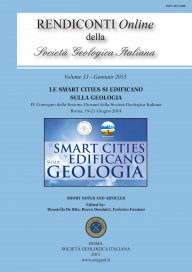
Facies variation in the Campanian Ignimbrite
Claudio Scarpati (*), Domenico Sparice (*) & Annamaria Perrotta (*)
(*) Dipartimento di Scienze della Terra dell'Ambiente e delle Risorse, Università di Napoli "Federico II", Largo San Marcellino 10, 80038 Napoli. E-mail: claudio.scarpati@unina.it
DOI: https://doi.org/10.3301/ROL:2015.20
Volume: 33/2015
Pages: 83-87
Abstract
The Campanian Ignimbrite eruption (39 ka) is the most powerful caldera-forming event vented from Campi Flegrei. The pyroclastic density current (PDC) deposits associated to this plinian, high-magnitude event are mainly known as a widespread welded gray trachytic tuff containing inverse-graded scoria clasts. A new study of the lithological facies of the medial-distal CI PDC deposits has highlighted the occurrence of five different lithofacies: massive, stratified, sand-wave, inverse-graded, normal-graded. These lithofacies exhibit three main vertical association: stratified/sand-wave to massive, stratified to inverse/normal-graded, massive to inverse-graded. The facies associations reflect changing in style of deposition from the base of an "unsteady" pyroclastic density current.
Keywords
Get Full Text